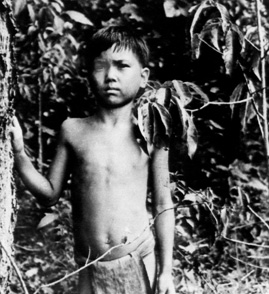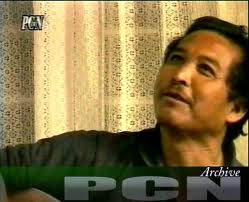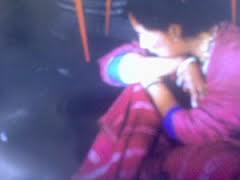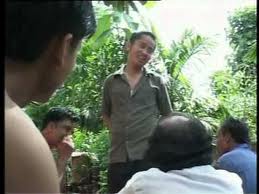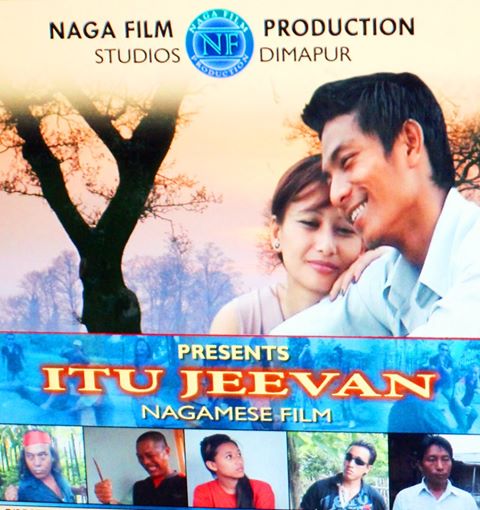North-Eastern cinema
(→Kokborok films) |
(→Nagaland: Nagamese cinema) |
||
| Line 161: | Line 161: | ||
=Nagaland: Nagamese cinema= | =Nagaland: Nagamese cinema= | ||
| + | |||
| + | Readers are requested to provide text. Till then six photographs from Nagamese cinema on this page will give an idea of the kind of cinema being made in Nagaland. | ||
| + | |||
[[File: Aji Raja.jpg|’Aji Raja’ (Nagamese) dir: Mohammed Baharuddin |frame|500px]] | [[File: Aji Raja.jpg|’Aji Raja’ (Nagamese) dir: Mohammed Baharuddin |frame|500px]] | ||
[[File: Rose Longchar.jpg| Rose Longchar, Nagamese superstar|frame|500px]] | [[File: Rose Longchar.jpg| Rose Longchar, Nagamese superstar|frame|500px]] | ||
[[File: Rose Longchar2.jpg| Rose Longchar, Nagamese superstar|frame|500px]] | [[File: Rose Longchar2.jpg| Rose Longchar, Nagamese superstar|frame|500px]] | ||
| − | |||
| − | |||
[[File: Montu Jole.jpg| Montu Jole (Nagamese film)|frame|500px]] | [[File: Montu Jole.jpg| Montu Jole (Nagamese film)|frame|500px]] | ||
[[File: Itu Jeevan.jpg|Itu Jeevan (Nagamese film)|frame|500px]] | [[File: Itu Jeevan.jpg|Itu Jeevan (Nagamese film)|frame|500px]] | ||
Revision as of 21:05, 4 July 2013
This is a collection of articles archived for the excellence of their content. Readers can send additional information, corrections, photographs and even Readers will be able to edit existing articles and post new articles directly |
North-East Indian cinema
This is a newspaper article selected for the excellence of its content. |
This page has been curated and compiled by Mr. Mayang Tsumaar Dakaar Tephriimia Wai of Gyaagar, based on the writings of:
i)North-East cinemas: Interesting times/
By Utpal Borpujari, Deep-Focus, December 30, 2012 Utpal Borpujari
ii)Deep-Focus
iii)Ignore, and be ignorant. Cinema from the Northeast has verve.
By Utpal Borpujari Outlook
iv) Teresa Rehman
Tehelka/ Mishingrenaissance September 17, 2008
Assamese films
North-East India has had an interesting cinematic history that started in 1935 with the making of “Joymoti”, the first Assamese film made by author-nationalist-poet-playwright-tea planter-lyricist-composer-and-much-more Jyotiprasad Agarwalla. “Joymoti”, which is the story of an eponymous princess of the Ahom dynasty who laid down her life for the sake of democracy, came four years after “Alam Ara” (1931), the first Indian talkie.
Cinema from the Northeast has mostly remained on the margins of Indian cinema, just like this most misunderstood region of India has been in the country’s consciousness. This, despite the fact that it has had a 77-year history of cinema, produced internationally feted filmmakers like Jahnu Barua and Aribam Syam Sharma, and given to the nation’s cinema personalities like Pramathesh Chandra Barua, S.D. Burman, Salil Chowdhury, Bhupen Hazarika, Danny Denzongpa and Seema Biswas.
Hundreds of ethnic communities and languages
Home to hundreds of ethnic communities speaking hundreds of dialects, this geographical swathe is like a tower of Babel. However, Assamese and Manipuri filmmakers have dominated the landscape for obvious reasons of having a slightly respectable viewer base. It is also here that cinema has acted as a platform—at least in the last three decades or so—to showcase ethno-cultural aspirations, no matter if such endeavours have been sure-shot recipes for financial disaster. How can one hope to recover the investment, let alone make profits, if a film is made in languages like Kokborok or Monpa, spoken by small tribes who inhabit areas where there are no cinema halls? But despite that, films have been made in these languages (spoken in parts of Tripura and Arunachal) as there has been cinema in languages like Bodo, Karbi, Mishing, Khasi and even Sadri, the lingua franca of the tea garden labourers of Jharkhand origin.
The history of cinema in northeastern India remains an unwritten one outside the region, barring one or two passing reference books on Indian cinema. Beyond film festival regulars, how many have seen films like Barua’s Halodhiya Choraye Baodhan Khai (The Catastrophe), one of the most-travelled Indian films internationally, and a winner of the National award for Best Feature Film? It was made with a paltry budget of Rs 7 lakh but earned over Rs 1 crore in domestic and international sales (you will fall off the chair if you calculate the profits in percentage terms). Or heard about Sharma’s Ishanou, whose actress won a jury’s special mention at the Cannes Film Festival and whose selection to the ‘Un Certain Regard’ section of that festival in 1991 had elicited a headline to this effect in a ‘national’ English daily: ‘No Indian films in Cannes this year, but a Manipuri film makes the cut’!
Films in Assamese, Bodo, Garo, Jaintia, Karbi, Kokborok, Manipuri, Mishing, Monpa, Rabha, Sadri
Since then, a few hundred movies have come about in the region that is called a heterogeneous-sounding “the North-East” for geopolitical reasons, but which is actually a landmass made up of eight states that such an immense ethnic and cultural diversity that the overarching nomenclature sometimes actually feels quite odd. Films have been made in this region in not only in Assamese and Manipuri, the two languages that have had a semblance of an industry, but also in languages for which there are practically no avenue for theatrical release – such as Karbi, Mishing, Bodo, Monpa, Kokborok and Sadri.
But with the advent of digital filmmaking, the region in recent years has witnessed what can be called “democratisation” of cinema. Now, the North-East gets films in a variety of languages and dialects, such as Khasi (in which a single celluloid film titled “Manik Raitong” was made in the 1980s), Jaintia, Garo, Rabha, etc., apart from the languages already mentioned. Most of these films reach the people either through “mobile” cinema format, in which films are shown to people in community halls, tents and even open spaces against tickets through a set of LCD projector, a screen and a DVD player that moves from place to place in interior parts of the region, or through DVDs/CDs sold for home video viewing. It’s quite needless to say that because of this democratisation of cinema, a lot of people without any knowledge of the medium or the art but with loads of allegedly ill-gotten money have become ‘filmmakers’, resulting in a large number of productions that won’t stand scrutiny of the definition of cinema.
But at the same time, the easy availability of low-cost digital movie-making cameras and the resultant possibility of massive reduction in filmmaking costs have also enabled some talented youngsters to experiment with interesting subjects even with limited budgets in recent years.
North-eastern cinema: Mishing Impossible
Teresa Rehman
Tehelka/ Mishingrenaissance September 17, 2008
Films in Karbi, Bodo and Monpa. Films on witch-hunts and polyandry among yak shepherds Militant diktats against Hindi cinema are ushering in a revolution, says Teresa Rehman
Since the closure of cinema halls in the region, partly due to militant diktats against Hindi films and partly because of the emergent VCD culture, the film industry in Manipur has been doing brisk business in the VCD format — in cinema halls, on cable networks and in video parlours. In Assam too, video films have opened a window into a new world, where the box-office no longer dictates terms.
The newfound glory has not come without its share of difficulties. The crew of Sonam had to hike up to a height of 15,000 feet. And Joseph Pulinthanath, director of Mathia, undertook a three-hour trek through a river with six tonnes of filmmaking equipment, loaded on eight buffalo carts. Pulinthanath says, “We had to break the first shooting session due to incessant rains and an inundated river. In fact, one crew member succumbed to malaria during the shoot.”
FILM CRITIC Arun Lochan Das too feels that films made in tribal dialects are important tools that aid the understanding of tribal culture and community issues. “The government should grant subsidies for the making of such films and help promote them,” he says.
Yet, it is also important to recover the money invested by financiers and filmmakers have been trying to do so in innovative ways. During the Puja season, Pulinthanath lends out CDs of Mathia to be screened in remote villages. Audiences too have not disappointed them. Residents of the Bodo dominated areas of Assam throng the touring halls whenever a film in their language is screened. In fact, fired by the challenge, Jwngdao Bodosa had made the first Bodo film, Ala Yaron, which was a big hit in 1986. He is currently working on an English-Bodo film titled Golden Cocoon. “I wanted to showcase the silkworm-rearing tradition of the Bodos,” he says, adding that 70 percent of the film will be in English and 30 percent in Bodo.
Tribal cinema, however, remains a largely unchartered area. “There is a lot of originality here and hundreds of ways to tap into it, instead of turning the film into a mere commercial product,” says Bora. Fortunately, there are several enthusiastic filmmakers in the northeast now who are more than willing to rise to the challenge.
From Tehelka Magazine, Vol 5, Issue 22, Dated June 07, 2008
Manipuri Meitei-speaking film industry
Manipur, known more for producing Indian national sports heroines and heroes, and theatre legend Ratan Thiyam, has also made a mark in the reel world. The state saw its first film, Matamgee Manipur, in 1972 but carved its name on the world cinema map with A.S. Sharma’s Imagi Ningthem and Ishanou, both universal tales in ethnic settings. A state brimming with young cinematic talent, it is, however, yet to produce another filmmaker of the calibre of Sharma. But the young brigade has done the unthinkable by converting their film industry completely into a digital one to meet the challenge of closure of cinema halls. This followed a ban in the mid-1990s on Hindi films by an insurgent group, making celluloid filmmaking unviable. The state now produces around 60-70 digital feature films every year, all extremely low budget of course. And it is this bunch that, through a petition in the Gauhati High Court, got the I&B ministry to change the rules to make digital films eligible for the national film awards and Indian Panorama, opening the doors for low-budget films made in unheard-of languages to compete with others.
Manipur last made a celluloid feature film way back in 1998 as the format became economically unviable after a ‘ban’ on the screening of Hindi films led to gradual closure of most of the Imphal Valley (which the hub of the Manipuri Meitei-speaking film industry). It is the first state in India to have a fully-digital film industry, and every year its filmmakers have been producing around 50 digital feature films that are made in budgets in the range of approximately Rs 6-15 lakh. The fact that it has been continuously producing that many films every year means that the expenditure-profit ratio has got maintained through the limited theatrical and widespread travelling theatre releases.
The state, which has a vibrant pool of talented young filmmakers who are creating some highly interesting documentaries and short films that have been winning awards at various festivals on a regular basis, will after a long period see a celluloid film with an unheard of budget for the local film industry – all of Rs 1 crore! This ‘big’ budget is the result of the requirement of the subject of the film, which is set in the backdrop of the fierce battles of World War II that were fought between the Allied Army and the Japanese forces in North-Eastern India – perhaps the first fictional film ever to have this backdrop. The film, titled “My Japanese Niece”, according to its young director Mohen Naorem, will bring into focus the unknown humanitarian aspects of the war that was fought in Manipur and Nagaland.
The story, Naorem has said in an interview published in the media, focuses on the humane relationship shared by the Japanese, often portrayed as cruel soldiers who committed a lot of atrocities, with the local Manipuri population. The story of the film would take the viewer in a journey of discovery through the lead character Asada, a Japanese woman who comes to Manipur to pay homage to her uncle who was presumed dead in the March 1944 battle. As she reaches the state, she is told about a man, who has dies a few months before her arrival, and who resembled her uncle. Asada goes on a journey of discovery during which she learns about the the trials and tribulations of the Japanese soldiers in India. Naorem, who plans to release the film in August next year, got the idea for the film after he saw how Manipuris raised relief funds after Japan was hit by the massive March 2011 earthquake, as also the visit of a Japanese team to exhume remains of 11 Japanese soldiers in Assam in early 2012.
Naorem, who has already cast Osaka-based model Yu Asada for Asada’s character and London-based Junichi Kajioka (seen in films like Devils on the Doorstep, City of Life and Death, and The Flowers of War) as the lost soldier, is looking more at the international market rather than the local market for his film, especially the South-East Asian and Japanese markets. While his film will be in Manipuri, he also plans to dub it in English and Japanese. Several other talented Manipuri filmmakers, such as Haobam Paban Kumar (who made the powerful political documentary “AFSPA 1958”), Oinam Doren and Romi Meitei are planning a slew of interesting films in the near future, all looking majorly at exploring the international market potential for their projects. The Manipur Film Development Corporation has recently acquired a reasonably good digital camera to give a boost to local filmmakers aspirations.
Assamese films
Meanwhile, in Assam, which saw a real ebb in filmmaking in the last decade, suddenly seems to be witnessing better cinematic days. The greatest living Assamese filmmaker, Jahnu Barua, has made a comeback to the state’s film scenario after about eight years, and his latest film “Bandhon” would have hit the screens by the time this article gets into print. The film has a powerful and humane storyline raising questions about several issues of the day, and has been shot in Assam and Mumbai. Barua’s favourite actor Bishnu Kharghoria, along with popular starts like Jatin Borah and Jerifa Wahid, form the cast of the film that got its world premiere at the Mumbai Film Festival recently.
Incidentally, this film has been produced by the Assam Film (Finance & Development) Corporation, which till date has produced only one film before this, that too years ago. The Corporation is also exploring the co-production route to jointly produce four other Assamese films in collaboration with private producers. Hope this trend continues and the state government provides a regular budgetary grant to the Corporation so that it can continue producing meaningful cinema in various local languages. Barua, whose last two filmmaking attempts in Hindi (“Butterfly Chase” and “Har Pal”) remains incomplete for reasons unknown, is already preparing to shoot his next Assamese project, which definitely is a good news for the local film industry.
Assamese films
See also Assamese cinema
Another young filmmaker, Bidyut Kotoky, also made a promising debut recently with his National Film Development Corporation (NFDC)-released “Ekhon Nedekha Nodir Xhipare” (As the River Flows) finally getting theatrical release to encouraging response from the people after nearly two years in gestation. The Hindi version of the film, which sensitively tackles the issue of how the common man of Assam has suffered because of the over three decades of insurgency and social unrest, is also expected to be ready soon. The film ran for four weeks in Guwahati and local film industry insiders said it had the potential to do much better financially all across the state if a proper pre-release publicity campaign had been carried out.
The fact that several other interesting Assamese films – “Dwaar” by Bidyut Chakraborty whose debut film “Raag Birag” had wowed audiences in several international film festivals for its deeply philosophical tone, “Adhyay” by Amulya Manna whose previous film “Aideu” had chronicled the life of the heroine of “Joymoti”, Aideu Handique, young filmmaker Rajesh Bhuyan’s take on female foeticide in “Me and My Sister”, and septuagenarian director Prabin Bora’s socio-cultural drama “Luitok Bhetibo Kone” – are getting ready to hit the big screen puts the local film industry at a possible turning point from where things can get only better.
Karbi cinema
Teresa Rehman
Tehelka/ Mishingrenaissance September 17, 2008
Gautam Bora’s film Wosobipo (Cuckoo’s Call), a film made in Karbi, was probably one of the first few of its kind. It explores the lives of tribal farmers in Karbi Anglong, and their alienation from a new market economy. Bora says, “I did a lot of research and my film reflects unknown aspects of the Karbi tribe. The film serves as a document as Karbi language and literature is still in a nascent stage.”
Kokborok films
See Kokborok cinema
Meghalaya cinema (Khasi cinema, Jaintia cinema)
Ka Synjuk Ri ki Laiphew Syiem (The Alliance of Thirty Kings), was the first Khasi film, and Manik Raitong (Manik The Miserable), the first Khasi film in colour.
Ka Synjuk Ri ki Laiphew Syiem was directed by late Hamlet Bareh Ngapkynta in 1981.
Manik Raitong, a celebrated film of 149-minute duration, was directed by Ardhendu Bhattacharya and produced by Rishan Rapsang in 1984. Recently, it was packaged in VCD format. Legendary music composer and singer Skendrowell Syiemlieh, who received the Padma Shri posthumously in 2008, had lent his voice for the film. The movie also represented the Indian Panorama at the Tokyo Film Festival.
Skendrowell Syiemlieh was a gospel composer and singer and recepient of several state awards, he began his debut as a playback singer for Khasi films (the first, Manik Raitong), but later switched to full-time Gospel singing. He also composed several songs and published albums on Khasi cultural themes.
Chake was a film from the Jaintia hills.
Mishing-language cinema
See Mishing cinema
Mizo cinema/ Films from Mizoram
See Mizoram: cinema
Monpa films
Teresa Rehman
Tehelka/ Mishingrenaissance September 17, 2008
TonyTharakan Toe Knee Unplugged
These films weave together folk tales and modern themes in a way that has caught the imagination of the tribal population. Enlivened with tribal costumes, dance and music, they also offer an exotic package that is making a mark worldwide. Sonam, a film on polyandry among yak shepherds was a big-budget 35 mm cinemascope production. The first feature film made in Monpa, a dialect of the Indo-Tibetan language of Arunachal Pradesh, it was in competition at the 37th International Film Festival of India in 2006, and was telecast on National Geographic
However, with only one cinema hall in Arunachal Pradesh, screenings are hard to organise.
Ahsan Muzid’s film ‘Sonam’ depicts the practice of polyandry among the Brokpas, yak shepherds who live on the mountain slopes in Tawang. This tradition, based on a custom of the Monpa society, is still being followed in remote areas.
Muzid explores how this complex way of life affects relationships. Sonam, a woman caught between two husbands, is torn between her love for one and her loyalty to the other. She wastes away until she finds ultimate atonement in her own death.
‘Sonam’, made in the Monpa dialect with English subtitles, has garnered a clutch of awards at various film festivals, most recently at the Mumbai Academy of the Moving Images (MAMI) festival. And righty so. Muzid must be feted for his technical finesse and his ability to eke out emotions from first-time actors.
It must have been a struggle to shoot ‘Sonam’ in a state where film culture is absent and that too at such high altitudes. Tawang district looks absolutely breathtaking on screen and I wonder if the state government is doing enough to promote it a tourist attraction. Hoping to see other films from the region. Coz there are enough tales waiting to be told.
Remarks: The good thing is Muzid doesn’t go overboard with melodrama. His story, which has universal appeal, is his strong point. His characters are believable and their emotions true to life. Sonam
120 mins – 35 mm Cinemascope
Direction/Screenplay – Ahsan Muzid
Nagaland: Nagamese cinema
Readers are requested to provide text. Till then six photographs from Nagamese cinema on this page will give an idea of the kind of cinema being made in Nagaland.
Sikkim: cinema
Even Sikkim, the eighth North-Eastern state, is seeking to put itself on the cinematic map through Pradip Rasaily’s film “Katha”, an effort at serious storytelling. Once can only hope – in a year when the Indian film industry celebrates its 100th year – that the trend continues, and the trash abates.
[Xnepali]
‘Katha,’ a love story, should rightly be called an Indo-Nepali film. it was shot in East Sikkim, where Nepali-speaking people live, and was released in Sikkim before being released in Nepal. The director, Prashant Rasaili is known for directing another popular movie ‘Acharya’. Although the movie was appreciated critically, it wasn’t successful commercially. ‘Katha’ is his boldest experiment, starting the shooting without any script. The script and dialogues were created simultaneously during the shooting at location and torch lights were used while shooting. It was the first film of Saugat Malla as a solo actor. Usha Rajak, whose last hit movie was ‘Iku – The jungle man’ (First part) only does few selected movies.
(Published in Deep Focus Cinema, December 2012 – the 1st issue of the relaunched version)
Bodo, Karbi, Kokborok
Filmmakers like Gautam Bora (who made the first Karbi-language film Wosobipo), Manju Borah, Bidyut Chakraborty, Sanjeev Hazarika, Jwngdao Bodosa (who has made several acclaimed Bodo films), Sanjib Sabhapandit and Joseph Pulinthanath (a Malayali settled in Tripura who has made two feature films in Kokborok) continue to make realistic cinema.
Tangkhul films
Top picks from the Northeast
• Halodhiya Choraye Baodhan Khai (Assamese; Dir: Jahnu Barua): A tale of a small-time farmer’s fight to get his property and rights back with great performances. Indra Bania got the Best Actor award at the Locarno Film Festival.
• Imagi Ningthem (Manipuri; Dir: Aribam Syam Sharma): A moving tale of a grandfather’s relationship with his grandson put Manipuri cinema on the world map.
• Sandhyarag (Assamese; Dir: Dr B.N. Saikia): A young girl struggles with her aspirations in the backdrop of a rural-urban divide.
• Agnisnaan (Assamese; Dir: Dr B.N. Saikia): Strong dialogues, superb characterisation. Still great viewing even 27 years after its making.
• Hkhagoroloi Bohu Door (Assamese; Dir: Barua): A debate on development couched in a grandpa-grandson story set in rural Assam.
• Ishanou (Manipuri; Dir: Sharma): Uses the backdrop of folk traditions and a mother-son story to question how religion intrudes in one’s life.
• Wosobipo (Karbi; Dir: Gautam Bora): His only feature film till date, it’s rich in visual details.
• Adajya (Assamese; Dir: Santwana Bardoloi): Based on an Indira Goswami novel, a powerful portrayal of a woman who rebels against patriarchal societal norms.
See also
Assamese cinema: This page has, at the bottom, links to several other articles in Indpaedia.com related to Assamese cinema.

